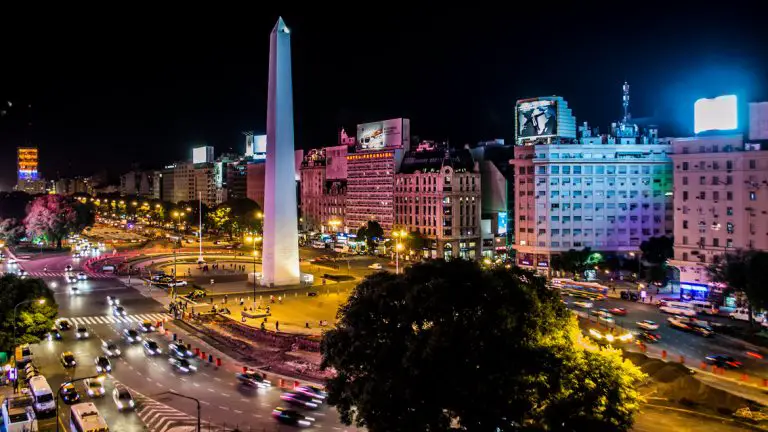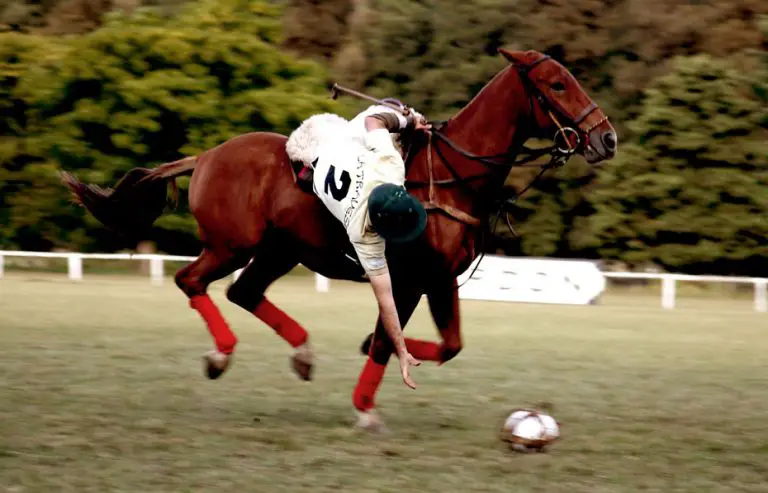50 Interesting Facts about Argentina
Facts about Argentina
Argentina is considered as one of the preferred destinations for travelers from all over the world. From their meat consumption, tango dancing and diverse culture, these interesting Argentina facts will blow your mind.
1. Argentina is the eighth largest country in the world.
2. The name “Argentina” derived from the Latin word “silver”.
3. Buenos Aires is the continent’s most visited city.

4. Argentina covers an area of 1,068,296 square miles.
5. Argentina had 5 presidents in 10 days in 2001.
6. Argentina was the 10th wealthiest nation per capita in 1913.

7. Both the hottest and the coldest temperatures ever recorded on the South American continent have occurred in Argentina.
8. Argentina is the largest Spanish-speaking country in the world.
9. Argentina has the second-highest rate of anorexia in the world after Japan.

10. Argentina shares a land border with five countries, including Uruguay, Chile, Brazil, Bolivia, and Paraguay.
11. The official currency of Argentina is the Peso.
12. Buenos Aires is the capital city of Argentina.

13. The Latin music started in Buenos Aires.
14. The most popular dances in the world, the tango originated in the slaughterhouse district of Buenos Aires in the end of the 19th century.
15. Argentine beef is famous around the world.

16. Argentina has the highest consumption of red meat in the world.
17. The Argentina national football team has won the football World Cup twice in 1978 & 1986.
18. Pato is a national sport of Argentina which is played on horseback.

19. There are over 30 national parks in Argentina.
20. The world’s earliest plants “Liverworts” were found in Argentina, which had no roots and stems.
21. Perito Moreno Glacier is the third-largest freshwater source and also a glacier that is growing instead of shrinking.

22. Buenos Aires has more psychoanalysts and psychiatrists than any other city in the world.
23. Argentina is divided into seven different regions: Mesopotamia, Gran Chaco Northwest, Cuyo, Pampas, Patagonia and Sierras Pampeanas.
24. Argentine soccer hero Lionel Messi is the world’s best footballer.

25. Over 10% of the world’s flora is found in Argentina.
26. Argentina is the fifth leading wheat exporter country in the world.
27. Argentines spend most of their time listening to the radio as compared to any other nation in the world.

28. Argentina was the first country in South America to authorize same-sex marriage in 2010.
29. Argentina has the highest rates of movie viewing in the world.
30. Abortion is still restricted in Argentina except in cases where the life of the mother is in danger or rape.

31. Argentines greet each other with a kiss on the cheek.
32. Aconcagua is the highest point in Argentina at 22,841 feet high.
33. Argentina was the first country to have radio broadcasting in the world on August 27, 1920.

34. Argentines have the highest rates of movie watching in the world.
35. Parana River is the Longest River in Argentina.
36. The first woman President to be elected in Argentina was Cristina Fernandez de Kirchner.

37. Quirino Cristiani was the first Argentinians to create the first animated film in 1917.
38. 30% of Argentine women go through plastic surgeries.
39. Argentina became the first country to use fingerprinting as a method of identification in 1892.

40. Yerba Mate is the national drink of Argentina.
More Argentina Facts
-
The official name of Argentina is the Argentine Republic.
-
The name Argentina comes from the Latin word for sliver ‘argentum’.
-
By land area Argentina is the 2nd largest country in South America and the 8th largest country in the world.
-
Spanish is the official language of Argentina but there are many other languages spoken throughout the country.
-
Argentina shares a land border with 5 countries including Chile, Brazil, Uruguay, Bolivia and Paraguay.
-
The capital city of Argentina is Buenos Aires.
-
Argentina has a population of over 42 million people (42,610,981) as of July 2013.
-
Argentina borders the Andes mountain range to the west, the highest point is Mount Aconcagua 6,962 m (22,841 ft) located in the Mendoza province.
-
The Argentine city of Ushuaia is the southernmost city in the world.
-
The Latin dance and music called the Tango began in Buenos Aires.
-
Argentina has three Nobel Prize recipients in the Sciences, Bernardo Houssay, César Milstein and Luis Leloir.
-
The currency of Argentina is called the Peso.
-
Argentine beef is famous around the world and Asado (an Argentine barbecue) is very popular in the country which has the highest consumption of red meat in the world.
-
Argentine cartoonist Quirino Cristiani made and released the world’s first two animated feature films in 1917 and 1918.
-
The most popular sport in Argentina is football (soccer), the Argentine national team has won the football World Cup twice in 1978 and 1986.
-
The national sport of Argentina is Pato a game played on horseback. It takes aspects from polo and basketball. The word Pato is Spanish for ‘duck’ as early games used a live duck inside a basket instead of a ball.
-
Basketball, Polo, rugby, golf and women’s field hockey are also popular sports in the country.
-
There are over 30 national parks in Argentina.
The popular Argentinian sport pato is a combination of polo and basketball. Pato is the Spanish word for “duck,” and the sport was originally played by gauchos with live ducks in baskets.
The earliest plants to grow on land have been discovered in Argentina. These newly discovered plants are called liverworts, very simple plants without roots or stems, which had appeared as early as 472 million years ago.[10]
The Italian population in Argentina is the second largest in the world outside of Italy, with some 25 million people. Only Brazil has a larger Italian population with 28 million people.[10]

The city of Buenos Aires contains more psychiatrists and psychoanalysts than any other city
Buenos Aires has more psychoanalysts and psychiatrists than any other city in the world. It even has its own psychoanalytic district called “Ville Freud.” It is estimated that there are 145 psychologists for every 100,000 residents in the city.[1]
Buenos Aires has the second largest population of Jews in the Americas, outside of New York City.[10]
Argentina has been the uninterrupted world polo champion since 1949 and is the source of most of the world’s top 10 polo players today.[10]
Matthias Zurbriggen from Switzerland was the first to reach the summit of Mount Aconcagua in 1897.[10]
The Andes Mountains form a great wall along Argentina’s western border with Chile. They are the world’s second highest mountain range, behind only the Himalayas.[5]
The name “Patagonia” came from European explorer Ferdinand Magellan who, when he saw the Tehuelche people wearing extra-large boots, called them patagones (“big feet”).[5]
The short-tailed chinchilla is the most endangered animal in Argentina. It may already be extinct in the wild. Slightly larger than guinea pigs, they are famed for their soft hair, and millions were killed in the 19th and early 20th centuries to make fur coats.[5]
Howler monkeys, found in Argentina’s rain forests, are the loudest animals in the Western Hemisphere. The males have supersized vocal chords and they use the sound to locate and keep other males away.[5]
Argentina is home to the giant anteater, which has a tongue that can grow up to 2 feet (60 cm) long.[5]
Among the oldest evidence of ancient people living in Argentina is the Cave of Hands, in the western part of Patagonia, which has paintings dating from 9,370 years ago. Most of the paintings are of hands, and most of the hands are left hands.[5]
Guarani is one of the most widely spoken indigenous languages in the world. Several of its words have entered the English language, including jaguar and tapioca. In Argentina’s Corrientes province, Guarani has joined Spanish as an official language.[5]
Quechua, which is still spoken in northwest Argentina, was the language of the Inca Empire in Peru. Today, it is spoken by 10 million people in South America, which makes it the most widely spoken indigenous language in the Western Hemisphere. Quechua words that have entered the English language include llama, pampa, quinine, condor and, gaucho.[5]

Bandits Butch Cassidy and the Sundance Kid lived on a ranch in Argentina before being caught and executed for bank robbery
Legendary American bandits Butch Cassidy (nee Robert Leroy Parker) and the Sundance Kid (Harry Longbaugh) lived on a ranch near the Andes in Patagonia for a while before they were supposedly caught and executed in Bolivia for robbing a bank in 1908.[5]
Carlos Saúl Menem, the son of Syrian immigrants, became Argentina’s first Muslim president in 1989. He had had to convert to Catholicism earlier, though, because, until 1994, the law stated all presidents of Argentine had to be Roman Catholic. His Syrian ancestry earned him the nickname “El Turco” (The Turk).[5]
The bandoneon, also called the concertina, is an accordion-like instrument invented in Germany which has become synonymous in Argentina with the tango. Most bandoneons have 71 buttons, which can produce a total of 142 notes.[5]
Many gauchos, or Argentine cowboys, were of Jewish origin. The first recorded instance of mass Jewish immigration to Argentina was in the late 19th century, when 800 Russian Jews arrived in Buenos Aires after fleeing persecution from Czar Alexander III. The Jewish-Colonization Association began distributing 100-hectare parcels of land to immigrant families.[3]
Argentina’s workforce is 40% female, and women also hold over 30% of Argentina’s congressional seats.[3]
At its mouth, Argentina’s Rio de la Plata is an amazing 124 miles (200 km) wide, making it the widest river in the world, although some consider it more of an estuary.[3]
Veneration for the dead is so widespread across Argentina that the Argentines have been described as being “cadaver cultists.” In La Recoleta Cemetery, in Buenos Aires, tomb space goes for as much as US $70,000 for a few square meters making this one of the most expensive plots of land in the world.[1]
A traditional Argentine cure for a stomach ache is to deftly pull the skin covering the lower vertebrae on the back and is called tirando el cuero.[2]
Argentine soccer hero Lionel Messi is arguably the world’s best footballer. His nickname is La pulga (the flea) because of his small stature and elusiveness.[2]

The flag of Argentina. (Note: Three equal horizontal bands of light blue (top), white, and light blue; centered in the white band is a radiant yellow sun with a human face known as the Sun of May; the colors represent the clear skies and snow of the Andes; the sun symbol commemorates the appearance of the sun through cloudy skies on 25 May 1810 during the first mass demonstration in favor of independence; the sun features are those of Inti, the Inca god of the sun.) Source – CIA
Sources
- http://www.bbc.com/news/world-latin-america-18712378
- http://www.encyclopedia.com/places/latin-america-and-caribbean/south-american-political-geography/argentina
- http://kids.nationalgeographic.com/explore/countries/argentina/
- http://beef2live.com/story-world-beef-consumption-per-capita-ranking-countries-0-111634

